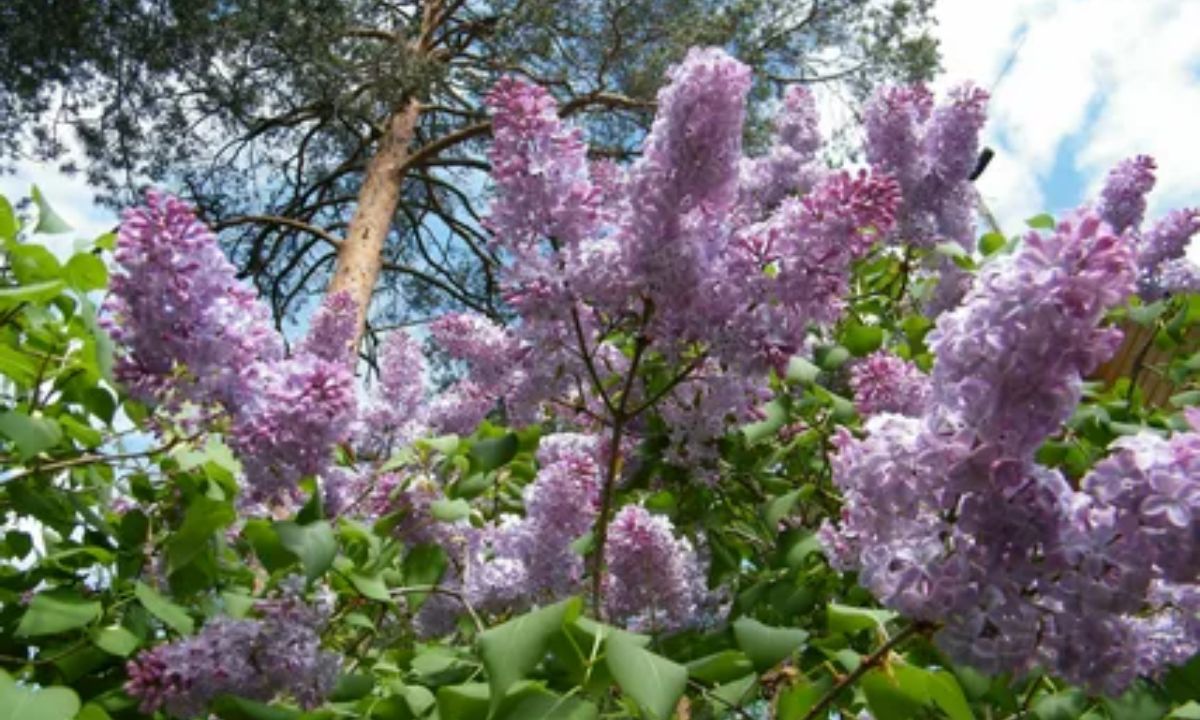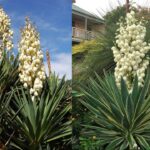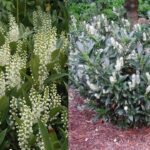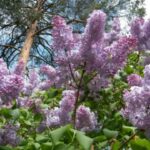The Bloomerang Lilac (Syringa x ‘Penda’) is a standout, reblooming lilac variety that has won the admiration of gardeners everywhere. Unlike traditional lilacs that bloom just once in spring, Bloomerang Lilacs offer repeated waves of fragrant blooms, starting in spring and continuing from mid-summer through fall.
Introduced in 2009 by Proven Winners, this compact shrub is popular for its disease resistance, vibrant lavender-pink flowers, and ability to attract butterflies and hummingbirds. Its compact size makes it ideal for gardens of all sizes, including patios and urban landscapes.
When and Where to Plant Bloomerang Lilac
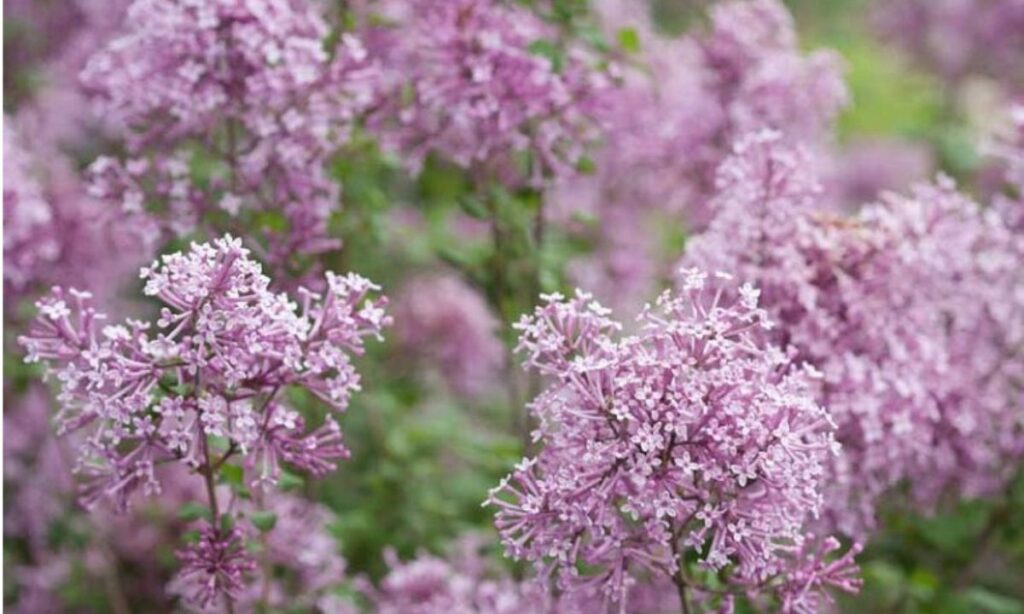
Choose a sunny location with well-draining soil to avoid root rot. Loosen the soil and mix in compost to improve fertility and drainage.
Ensure the soil has a slightly alkaline pH, between 6.5 and 7.0. If the soil is too acidic, add lime to adjust the pH for optimal growth.
Dig a hole twice as wide and as deep as the root ball. Place the lilac in the hole with the top of the root ball level with the surrounding soil.
Backfill the hole, gently pressing the soil to remove air pockets. Water thoroughly and add mulch around the base, keeping it 2 inches away from the stem.
Where to Plant
Bloomerang Lilacs thrive in sunny locations that receive at least 6 hours of direct sunlight daily. They are perfect for garden borders, foundation plantings, or as standalone specimens. Thanks to their compact size—4-6 feet tall and wide—they fit well in small gardens and container spaces.
Ensure the planting area has well-drained soil and good air circulation to prevent diseases like powdery mildew. Avoid spots prone to waterlogging.
When to Plant
The best times to plant Bloomerang Lilacs are early spring or fall. During these cooler seasons, the shrub can establish its roots before extreme weather sets in. Avoid planting during summer heat, which can stress the plant.
If you purchase a container-grown plant, it can be planted any time as long as the ground is not frozen. However, spring and fall remain optimal.
How to Plant Bloomerang Lilac?
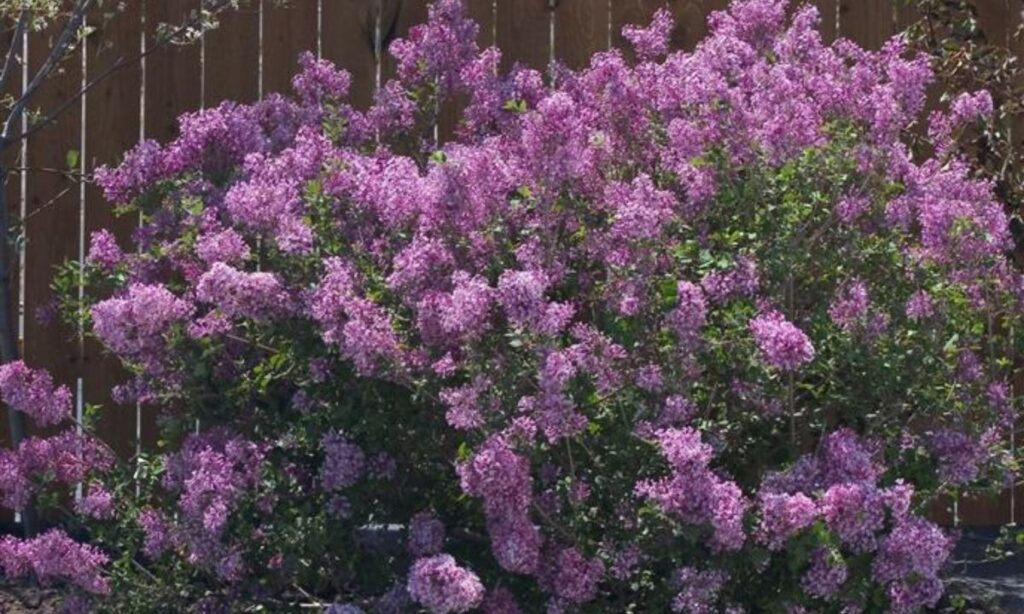
Here are Step-by-Step Guide Plant Bloomerang Lilac:
Step-by-Step Planting Guide
- Select a Site: Choose a sunny location with well-drained soil.
- Prepare the Soil: Loosen the soil and mix in organic matter like compost. Ensure the soil pH is slightly alkaline (6.5-7.0). Amend acidic soil with lime if necessary.
- Dig the Hole: Make the hole twice as wide and as deep as the root ball to encourage root spread.
- Plant the Shrub: Place the Bloomerang Lilac in the hole with the top of the root ball level with the soil surface. Backfill with soil and gently firm it down.
- Water Thoroughly: After planting, water the shrub deeply to settle the soil and hydrate the roots.
- Apply Mulch: Spread a 2-3 inch layer of mulch around the base to retain moisture and regulate soil temperature. Keep mulch 2 inches away from the stem to prevent rot.
Bloomerang Lilac Care Tips
Light
Bloomerang Lilacs need full sun for maximum blooms. Partial shade can reduce flower production and increase susceptibility to disease. Aim for at least 6 hours of sunlight daily.
Soil and Water
- Soil: Ensure the soil is well-draining and slightly alkaline. Heavy, clay soils can cause root rot.
- Watering: Water deeply once a week, providing about 1 inch of water. Mature shrubs are more drought-tolerant but benefit from consistent watering during dry spells.
Temperature and Humidity
Bloomerang Lilacs are hardy in USDA zones 3-7, making them suitable for colder climates. In hot climates, provide extra water and partial shade if necessary. Proper air circulation helps prevent fungal issues in humid regions.
Fertilizer
Feed Bloomerang Lilacs sparingly. Use a balanced, slow-release fertilizer like 10-10-10 in spring before the first bloom. Avoid over-fertilizing, as it can lead to excess foliage at the expense of flowers.
Pruning
Prune Bloomerang Lilacs after the first bloom cycle in spring. Remove spent flowers to encourage reblooming. For shape maintenance, perform light pruning. Avoid heavy pruning in late summer or fall, as this can remove next year’s flower buds.
Potting and Repotting Bloomerang Lilac
For container planting:
- Use a large pot with drainage holes.
- Fill with quality potting mix and ensure consistent watering.
- Repot every 2-3 years or when the plant becomes root-bound.
Pests and Problems
Pests like aphids, caterpillars, and mites can cause significant damage to plants by feeding on their leaves, stems, or roots. They weaken the plants, leading to stunted growth and reduced yield, making pest management essential.
Problems such as diseases and nutrient deficiencies also threaten plant health. Early detection and proper care are key to preventing long-term damage and ensuring a thriving garden.
Common Pests
- Aphids: Can cause leaf curling and deformities. Treat with insecticidal soap or neem oil.
- Lilac Borers: Damage stems and weaken plants. Prune affected branches and apply protective sprays.
Common Diseases
- Powdery Mildew: Prevent by ensuring good air circulation and avoiding overhead watering. Treat with fungicides if necessary.
Also See This: How to Grow Violet Flowers? A comprehensive guide
How to Propagate Bloomerang Lilac?
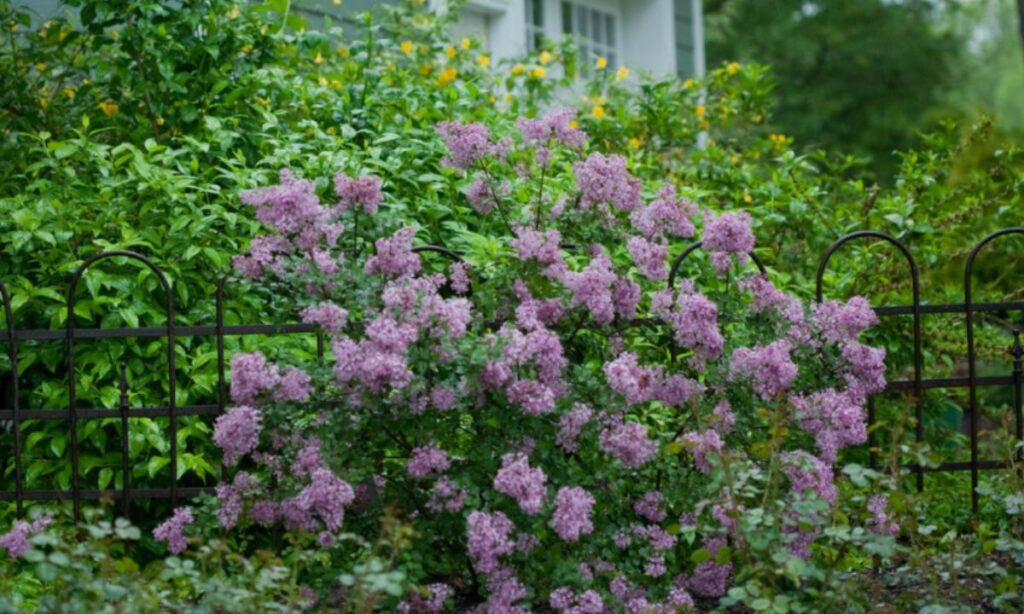
To propagate Bloomerang Lilac, start by taking healthy cuttings in early summer. Use sharp, clean shears and cut below a node to encourage rooting.
Plant the cuttings in moist, well-draining soil and keep them in indirect sunlight. Regular misting will help maintain humidity and promote root growth.
Propagation Steps
- Take Cuttings: In late spring or early summer, cut 6-inch sections from healthy, non-flowering stems.
- Prepare the Cutting: Remove lower leaves and dip the cut end in rooting hormone.
- Plant: Insert the cutting into a pot filled with a well-draining mix of perlite and peat. Water lightly.
- Care: Cover with plastic to maintain humidity. Place in bright, indirect light. Roots typically form in 4-6 weeks.
Bloomerang Lilac Companion Plants
Bloomerang Lilacs pair beautifully with perennials like lavender and salvia, creating a harmonious color palette. These plants thrive in similar sunlit conditions and complement the lilac’s blooms.
Evergreens like boxwood or juniper also make excellent companions, providing year-round structure. Their rich green tones enhance the vibrant lilac flowers during bloom season.
Bleeding Heart (Dicentra)
Bleeding Heart adds a soft, romantic touch with its delicate heart-shaped flowers. It blooms in spring, complementing the lilac’s early blossoms. After blooming, it goes dormant, allowing the lilac’s second bloom to shine.
Solomon’s Seal (Polygonatum)
The graceful arching stems of Solomon’s Seal pair beautifully with Bloomerang Lilacs. It thrives in partial shade, making it ideal for planting along the lilac’s edges.
Siberian Iris (Iris sibirica)
With vibrant blooms in blue, purple, and white, Siberian Iris adds color contrast to your garden. Its upright foliage complements the lilac’s rounded form.
Catmint (Nepeta)
Catmint’s silvery foliage and lavender-blue flowers create a calming effect. As a drought-tolerant perennial, it pairs well with Bloomerang Lilacs, adding texture and attracting pollinators.
Frequently Asked Questions
How tall does a Bloomerang Lilac grow?
It typically reaches 4-6 feet in height and width.
When does Bloomerang Lilac rebloom?
It blooms in spring, rests, and then reblooms from mid-summer through fall.
Can Bloomerang Lilac grow in shade?
Partial shade is tolerable, but full sun is essential for maximum bloom production.
What soil type is best for Bloomerang Lilac?
Slightly alkaline, well-draining soil is ideal. Amend heavy clay soils to improve drainage.
Is Bloomerang Lilac deer-resistant?
Yes, it is relatively resistant to deer but may still be browsed occasionally.
Conclusion
The Bloomerang Lilac is a remarkable addition to any garden, offering vibrant, fragrant blooms from spring through fall. With proper care, adequate sunlight, well-draining soil, and light pruning it rewards gardeners with consistent beauty.
Pair it with companion plants like Bleeding Heart, Catmint, and Siberian Iris to create a stunning, low-maintenance garden. Invest in this versatile shrub and enjoy its unparalleled charm and fragrance for years to come.

FAtima is a talented content writer and digital marketer with expertise in SEO, social media management, and online marketing.
